Today I turned in the third major project in my digital painting class, the Technical Challenge. This challenge was to draw nine spheres, five in specified materials (wood, metal, rock, glass, fur), four in materials of your choice. Here’s what I painted:
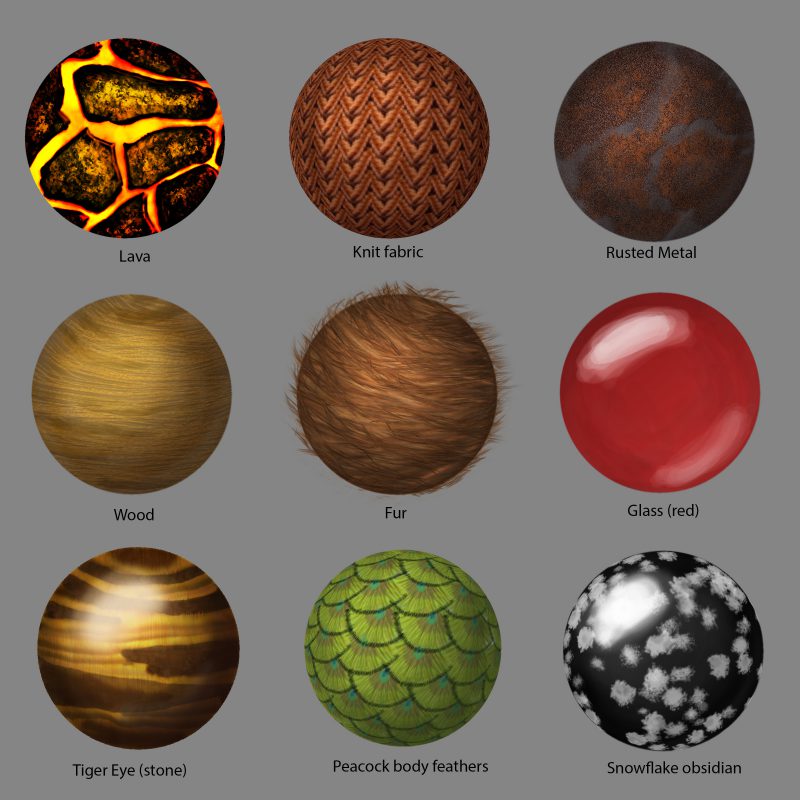
I’m really proud of my work on this assignment. I think I did a pretty good job of rendering each of the materials, some of which were really challenging. (The tiger eye gemstone, for example, had me going in circles for quite a while.) And, more importantly, I felt really comfortable painting with Photoshop for the first time. Not that I know everything (quite the opposite!), but I knew enough that I could develop a strategy/series of steps for painting each material. At the beginning of the class, I would have been totally stumped.
So now, on to the next assignment, which is due in a week and a half. For this assignment, we need to paint a dwelling for a small group of people. I did five sketches, and felt the most interesting one was the undersea dome:
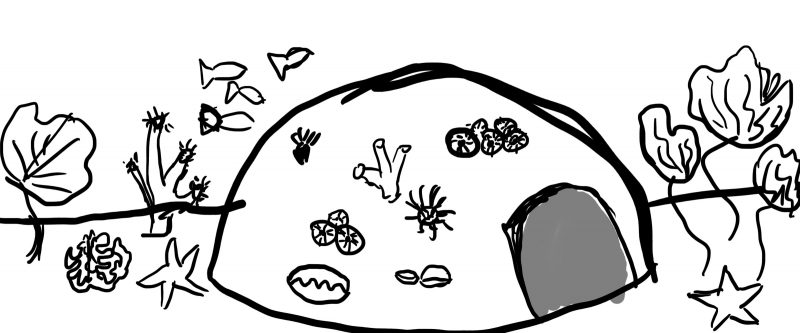
It’s basically a mermaid cave, only it’s a dome built under the sea. It’s covered with barnacles, coral, anemones, and other sea life (think “coral reef”), and is placed among other ocean life – fish, sea fans, starfish, and brain coral, among others.
So the next step was to do some short studies to figure out the lighting. I cloned the sketch in miniature, and started filling in some colors:
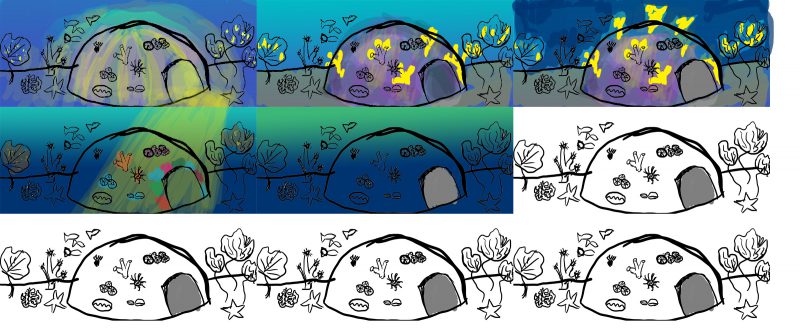
In the top left, the dome is supposed to be glowing; in the top middle, it’s medium light with some glowing coral. In the top right, it’s dark except for some glowing coral that lights up the house, and a bit of bioluminescence in the sea fans. And in the middle left, the dome is lit up with a spotlight, perhaps from a submarine, or perhaps just a burst of sunlight from above.
I was having trouble working out which version to run with, so I checked with the instructor. She suggested desaturating the image, since color can be confusing, and painting a grayscale version just to visualize the lighting. This proved immensely helpful, and here is the result:
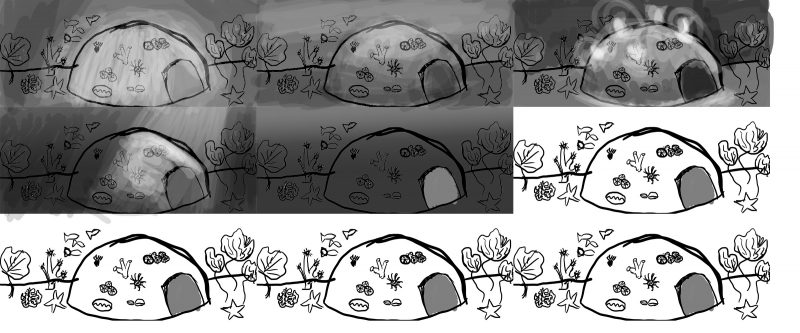
Of these, I like the top right and middle left best (the spotlight and the glowing coral). I like the top left as well, but I think the backlighting would make it hard to paint any details like sea fans, barnacles, etc. on the dome.
I’m fascinated by the process of designing and developing a digital painting. It basically follows the creative process laid out in my book, but with specific steps (black and white sketch, value study, etc.) for developing two-dimensional fine art. I’m feeling much more comfortable with the entire process than I was two months ago. I’m very glad I signed up for this class!
I’m looking forward to painting the undersea dome. It’s considerably more challenging than anything I’ve attempted so far, but I finally feel like I have enough skills to tackle something complex. And since the manuscript is already done, I have a week or two to devote to the project. It’s due the last day of class – Thursday, July 30.
And the cats? I’m going back into the archives for this one. About a month ago, Mike got a set of cubbyholes to store all his ham radio equipment. Of course, as Fritz so aptly demonstrates, it’s also great for storing cats. Especially curious ones.
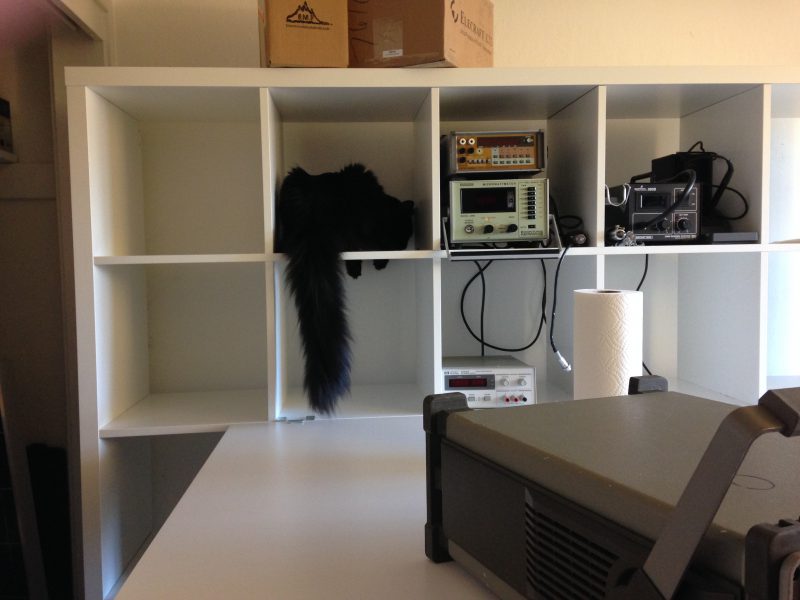

What a magnificent tail Fritz has. Doubtless he thinks so, too. (Cats are usually a bit vain.)
He does have quite the tail, doesn’t he? It would make a marvelous duster. And he does often use it to (unintentionally) dust things. 😉
I LOVE the fur and the peacock feathers. What could you make with fur????
I don’t know, but in the non-digital world, I just acquired four pounds of silk eyelash yarn that is just begging to be made into woven fur…so I’ll have to think of something. 🙂
Tien, what tool are you using to do the digital painting? Are you sticking with the mouse as an input tool? Or did you get one of the tablets? (If so, which one?) I’m thinking of getting a gift for my niece, who is definitely an artist in the making, and is soon taking a class on the digital skills version. I’m curious to know what you are using, and if you like it.
I’m using a Wacom Intuos 4 tablet that Mike got for me several years ago, medium size. I really like the Wacom tablets – I’d recommend at least a medium size one. I’ve heard that the Wacom Bamboo is quite good (the Bamboo is aimed at the general public, I think, whereas Intuos is their medium-end line) and it’s also much more affordable than either the Intuos or Cintiq.